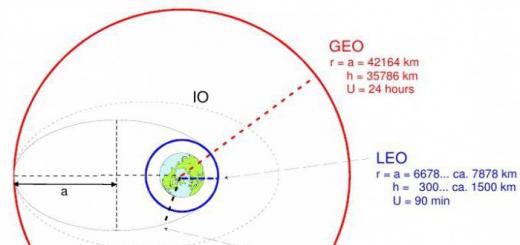The sentence contains information, asks about it, or directs to action. Most often it has a basis and secondary members describing it. In order to assimilate or refresh the memory of a topic, it is useful to study examples of the grammatical analysis of a sentence in Russian.
Grammatical basis in parsing a sentence
The basis is quite logical in application. It consists of a subject that directly names a thing or phenomenon, and a predicate - an action performed or directed at an object.
The subject is always used in the initial form (nominative), but can be not only a noun. It could be:
- numeral - to indicate quantity, set, number (there were three in line; four was his best estimate);
- personal pronoun (he quietly walked along the corridor; we left the classroom);
- indefinite pronoun (someone was sitting in the room; something bothered me);
- negative pronoun (no one could stop them);
- adjective in the sense of a noun (the person in charge was appointed by the management; the duty officer kept order).
In the grammatical analysis of a sentence, it is customary to highlight the subject with an underline, and the predicate with a double underline.

The predicate is most often a verb, but has several types:
- simple verb, expressed by the verb in any mood (the dog ran down the alley; the student gets up early);
- compound verb, consists of an auxiliary verb (modal word) and an infinitive (she started running in the morning; I have to go to work);
- compound nominal, having a linking verb (most often - to be) and a nominal part (a student became a student; bread is their main food; three times two is six(the word "will" is omitted);
Completeness of the offer
Based on the composition of the basis, sentences are two-part, where both main members are present or one is implied (incomplete) (night has come; where is he(omitted "is") ?) , and one-part. The latter are:
- definitely personal, in which it is clear from the face of the verb who it is about (I do my best(I); let's go for a walk(we));
- indefinitely personal, expressed by the past tense verb in plural (a floor below made a noise; somewhere in the distance they sang);
- generalized-personal, which attribute the action to everyone (often found in proverbs and sayings) (if you want to eat a fish, you need to climb into the water; you go and admire the view);
- impersonal, implying no object (it got dark; he was very sorry; it was cold in the room).
Secondary, but no less important
To give detailed information, the object and action are supported by third-party words and constructions. They are:

When performing a grammatical analysis of a sentence, they must also be taken into account. If there are minor members, the proposal is considered widespread, respectively, without them - non-common.
Complicated sentences - it's not difficult at all
Various plug-in components complete the offer by increasing the amount of information. They are embedded between the main and secondary members, but are already defined as a separate part, which goes as a separate paragraph in the grammatical analysis of the sentence. These components can be removed or replaced without losing the meaning of the text. Among them:
- detached definitions applicable to an object member (describe a property, stand out as a definition) are participle turnovers (the kettle, which was warming on the stove, whistled sharply; the road led to a house standing in the forest);
- isolated circumstances (stand out as a circumstance) are participle turns (he ran, stumbling over stones; looking wary, the dog held out its paw);
- homogeneous members of a sentence - perform the same function and always ask the same question (were scattered on the floor(what?) books, notebooks, notes(homogeneous subject); on weekends we only(what they were doing?) sleeping and walking(homogeneous predicate); he looked at(whom?) mother and sister(homogeneous addition));
- address to someone, which is always separated by a comma and is an independent member of the sentence (my son, you did the right thing; You, Andrei, misunderstood me);
- introductory words (probably, perhaps, finally, etc.) (I probably got excited; tomorrow, most likely, it will be hot).
How to make a grammatical analysis of a sentence, taking into account all the components?
For parsing, a clear algorithm has been created that does not cause difficulties if you know all the above constructions and components of the proposal. Among them, simple and complex ones stand out - the order of analysis is slightly different for them. The following is a grammatical analysis of sentences with examples for individual cases.

Simple sentence
At the beginning of autumn, covered with a golden carpet, the city alleys whimsically shimmer.
1. Define the main members. The basis should be one, as in this example: alleys- subject, shimmer- predicate.
2. Select minor members: (when?) at the beginning of autumn- circumstance (what?) covered with golden carpet- separate definition, (how?) whimsically- circumstance (what?) urban- definition.
3. Define parts of speech:
At the beginning of the noun. autumn n. , covered with golden adj. carpet n. , bizarrely overflow urban adj. alleys n.
4. Describe the signs:
- the purpose of the statement (narrative, incentive, interrogative);
- intonation (exclamatory, non-exclamatory);
- on the basis (two-part, one-part - indicate which one);
- completeness (complete, incomplete)
- by the presence of secondary (common, non-common);
- complicated (if yes, then by what) or not complicated;
The characteristic of this is non-exclamatory, two-part, complete, widespread, complicated by a separate definition.
This is what a complete grammatical analysis of a sentence looks like.
Difficult sentence
Since a complex sentence includes two or more simple ones, it is quite logical to parse them separately, but the parsing algorithm is still different. The grammatical analysis of a sentence in Russian is ambiguous. Compound sentences related to simple ones are:

An example of parsing a compound sentence
In the family, regardless of age, everyone was very busy, but on weekends everyone got together at one big table.
- All bases are highlighted. There are several of them in a complex sentence: everyone- subject, been busy- compound nominal predicate; all- subject, were going- predicate.
- Define parts of speech.
In the pr. family, noun. , regardless of from pr. age n. , each is a place. was ch. very nar. busy app. , nose. on pr. weekend adj. all place. were going to for pr. large adj. table su sch.
- Find out if there is an alliance. Here - "but". So the proposal is allied.
- It is possible to characterize by the position of simple ones if there is a union (paragraph 2). This example is compound sentence, simple ones in it are equivalent (i.e., if desired, you can divide it into two independent ones). In the case of non-union, this item is not indicated.
- Do general characteristics: narrative, non-exclamatory, complex, allied, compound.
- Disassemble simple inside separately:
- in the family, regardless of age, everyone was very busy (narrative, non-exclamatory, simple, two-part, full, common, complicated by a separate definition of "regardless of age")a
- on weekends everyone gathered at a large table
Complex sentence
The algorithm will be similar, only with the indication of the subordinating union. It is also part of the composition. You also need to highlight the main thing and find out how the subordinate clauses (parentheses) are “attached” to it.

This is a kind of submission, not a mandatory item, but it is also often taken into account.

The main thing to remember is that grammatical and syntactic analysis are synonyms. The meeting of one of the words in the task should not be frightening, since the topic is quite general and quickly digestible. For foreigners, it is difficult because of the great variability, but that's what makes the Russian language beautiful.
To correctly punctuate, you need to clearly understand the structure of the sentence. Syntactic analysis, that is, analysis of the sentence by members, is intended to help to understand it. Our article is devoted to the syntactic analysis of the sentence.
Syntax units
Syntax studies the relationship of words within phrases or sentences. Thus, the units of syntax are phrases and sentences - simple or complex. In this article, we will talk about how to parse a sentence, not a phrase, although it is often asked at school to do it too.
Why is parsing a sentence necessary?
The syntactic analysis of a sentence involves a detailed examination of its structure. This is absolutely necessary in order to correctly punctuate. In addition, it helps to understand the relationship of words within a phrase. In the course of syntactic analysis, as a rule, a sentence is characterized, all members of the sentence are determined and it is displaced by what parts of speech they are expressed. This is the so-called full parsing. But sometimes this term is used in relation to a short, partial, syntactic analysis, during which the student only underlines the members of the sentence.
Members of the proposal
Among the members of the proposal, the main ones are always distinguished first: subject and predicate. They usually form the grammatical basis. If a sentence has one grammatical basis, it simple, more than one complex.
The grammatical basis can consist of two main members, or include only one of them: either only the subject, or only the predicate. In the second case, we say that the sentence one-component. If both main terms are present - two-part.
If, apart from the grammatical basis, there are no words in the sentence, it is called uncommon. AT widespread the sentence also has secondary members: addition, definition, circumstance; application is a special case of definition.
if the sentence contains words that are not members of the sentence (for example, an appeal), it is still considered non-common.
When parsing, it is necessary to name the part of speech that expresses one or another member of the sentence. The guys work out this skill by studying Russian in the 5th grade.
Offer characteristics
To characterize a proposal, you must specify it, you must describe it.
- according to the purpose of the statement;
- by intonation;
- in count grammar basics etc.
Below we offer a proposal characterization plan.
For the purpose of the statement: narrative, interrogative, motivating.
By intonation: exclamatory or non-exclamatory.
Exclamatory sentences can be any for the purpose of the statement of the proposal, and not just incentives.
By the number of grammatical bases: simple or complex.
By the number of main members in the grammatical basis: one-part or two-part.
If the proposal is one-part, it is necessary determine its type: nominative, definitely-personal, indefinitely-personal, impersonal.
By the presence of secondary members: widespread or non-common.
If the proposal is complicated by something, then this must also be indicated. This is the parsing plan for the sentence; better to stick with it.
Complicated sentence
The sentence can be complicated by inversion, introductory and plug-in constructions, homogeneous members, isolated members, direct speech. If any of these types of complications is present, then it is necessary to indicate that the sentence is complicated, and write with what.
for example, sentence “Guys, let's live together!” complicated by the appeal "guys".
If the sentence is complex
If you need to parse complex sentence, you must first indicate that it is complex, and determine its type: allied or non-union, and if allied, then also complex or complex. Then characterize each of the parts in terms of the composition of the grammatical basis (two-part or one-part, type of one-part) and the presence / absence of secondary members.
The table shows the minor members and their questions.
Minor members can be expressed by different parts of speech, for example definition:
woolen skirt- adjective;
wool skirt- noun;
skirt ironed- participle;
winning habit- infinitive...
An example of parsing a sentence
Let's analyze the offer “I didn’t know that you, Masha, moved from the village to the city”.
We emphasize grammar basics. There are two of them: I knew and you moved . Let's define parts of speech: knew- the predicate is expressed by the verb in a personal form, etc.
Now we emphasize minor members:
Moved from where? from the village - a circumstance expressed by a noun; where? to the city is also a circumstance, also expressed by a noun. Masha- this is an appeal, it is not a member of the proposal.
Now let's give characteristic. The sentence is narrative, non-exclamatory, complex, allied, complex.
The first part of "did not know" is incomplete, not widespread.
The second part is two-part, common. Complicated by handling.
At the end of the analysis, it is necessary to draw up a scheme of a complex sentence.
What have we learned?
Parsing is intended to help understand the structure of a sentence, so everything that can be associated with it must be indicated. It is better to carry out the analysis according to the plan, then there are more chances that you will not forget anything. It is necessary not only to emphasize the members of the sentence, but also to determine the parts of speech, and to characterize the sentence.
Topic quiz
Article rating
Average rating: 4.5. Total ratings received: 638.
Parsing order
1. Determine the type of sentence according to the purpose of the statement (narrative, incentive, interrogative).
2. Determine the type of sentence by emotional coloring (exclamatory, non-exclamatory).
3. Find the grammatical foundations in the sentence and prove that it is complex.
4. Determine means of communication simple sentences as part of complex (conjunctions, allied words, intonation) and establish the type of this complex sentence (compound, complex, non-union, sentence with different types connections).
5. If offer compound, then characterize the semantic relations between its constituent simple ones; indicate the means of communication between simple sentences.
If the offer complex, then name the main and subordinate; indicate the means of communication between simple sentences and the type of the subordinate clause.
If the offer unionless, then determine the semantic relationships between its constituent simple ones.
If the offer with different types of communication, then highlight the semantic parts. Parse each part as a corresponding simple or complex sentence.
6. Draw up a sentence diagram and explain the punctuation marks.
Parsing Samples
1) The boat swayed on the waves playfully splashing against its sides, barely moving along the dark sea, and it played faster and faster.(Bitter).
The sentence is narrative, non-exclamatory, complex, compound, consists of two simple ones, interconnected by intonation and a composing adversative conjunction a.
First simple sentence the boat swayed on the waves, playfully splashing against its sides, barely moving along the dark sea; second - it played faster and faster. The grammatical basis of the first sentence is the boat was moving, the grammatical basis of the second sentence - it played. Between simple sentences as part of a complex relation of opposition.
Between simple sentences before conjunction a a comma is put at the end of a declarative sentence - a period.
2) But then one day, on a thaw March day, when the airfield suddenly darkened in one morning, and the porous snow settled so that the planes left deep furrows on it, Alexei took off in his fighter(Field).
The sentence is narrative, non-exclamatory, complex, complex, consists of four simple sentences, interconnected by intonation, allied word when and subordinating union what. The sentence has one main and three subordinate clauses: first and second relative clauses (refer to the word day in the main sentence and answer the question which one?), are interconnected by an adversarial union a; third clause of mode of action, measure and degree (refers to the combination of a verb-predicate with a demonstrative word So in the main sentence and answers the questions how? to what extent?).
This is a complex sentence with homogeneous and consistent subordination of subordinate clauses.
Subordinate clauses in the complex are separated by commas, a period is put at the end of the sentence.
Unfortunately, it is impossible to parse the sentence online in Russian. There are no services that would perform the task.
1. What is sentence parsing
Surely, you remember that parsing implies the following:
- determination of the type according to the purpose of the statement;
- identification of the species by emotional coloring;
- definition of the type by the presence of grammatical foundations;
- definition of sentence members (at school we emphasized parts of speech, this is exactly what you need).
In fact, there are more points, but this is the most basic.
Usually, by the concept under consideration, we mean only the last point. That is, the parsing of a sentence is usually the definition of the members of the sentence. From this we are repelled.
So, the truth is that to do this, that is, to determine the members of the proposal is impossible today. There just aren't any services that can do it.
But what about other articles on the Internet?
Yes, on other sites you can easily find the TOP-5, TOP-10 and so on services that allegedly help to parse the offer. But in fact, they do not work or perform a task, but not the right one. Also, many of them are for sentences in English.
2. What can be found on the Internet
Here is a list of tips and services that you will find on the Internet on this topic, as well as why they are fundamentally wrong:
- Site seosin.ru. It allegedly parses the text entered in a special field, but the site simply does not work. Most users do not see a picture with a code that seems to need to be entered to get started. Others display just the word "kod" instead. Judging by the forums, someone still sometimes sees a combination, but even if this is the case, when you click the "Analyze" button, nothing happens. What you entered in the field is deleted and you see it completely empty. Yes, it is quite possible that the developers could have made the necessary functionality and initially everything worked for them (we do not accuse anyone of cheating), but now this is not the case.

Rice. No. 1. Non-working service seosin.ru
- Website Gramota.ru (gramota.ru). Often on the Internet you can also find a link to this resource, but it performs a completely different task than what is needed. There is a service for checking one word in dictionaries. If you enter one word in the appropriate field, you will see full information about it - how it is spelled, what it means, synonyms, stress, and the like. But Gramotu.ru is not able to parse the sentence into parts of speech.

Rice. No. 2. Service Gramota.ru, which performs a completely different task
- Site morphologyonline.ru. And another resource that performs a task, but not the one. Here you can enter just one word and see what part of speech it is, morphological features and syntactic role in a sentence or phrase. Again, it only works with one word, not sentences.
Note: Maybe this service could be used for parsing text - enter each word separately and see what part of speech it is. But, as you can see in Figure 3, in the section " Syntactic role"It is only indicated that this word can be a different member of the sentence, depending on the context. In most cases, the same is written, so the service also belongs to the category of useless in our case.

Rice. No. 3. Service morphologyonline.ru, which also performs the wrong task
- all sorts of reference materials. Often in various articles you can see links to help, other texts, video tutorials and similar materials. Of course, all this is very useful, but after all, our task is to parse the entire proposal online, and not read about what it is and how it is performed. Perhaps a person already knows how to do this, but wants to test his knowledge with the help of online services. Unfortunately, there is no such possibility.
There are other resources as well, but they just don't work or work with only one word.
As for the Russian language, there is one service that performs the task partially. It's about about the site goldlit.ru. We will analyze it in more detail.
3. goldlit.ru
Let's say right away that this is a site for morphological analysis of a word online, but it also works with whole sentences.
If you enter a sentence in a line, information for each word will be displayed separately. There will be information about the part of speech, and this is already something. Of course, this is also an inferior performance of the task, but at least somehow. The service is free.
To use it, you need the following:
- In the special field, enter the offer you want to parse.
- Click the Parse button.
- After that, each word from the entered ones will be visible below its initial form, part of speech, grammar and possible forms.

Rice. No. 4. Use of goldlit.ru
It is clear that you will have to underline parts of speech yourself. About any definitions of subspecies by purpose, emotional coloring and so on is out of the question.
In fact, this is the site closest to the goal, but it fulfills it defectively. Even on the Internet there are many links to English-language resources, but they also do almost the same, but not that.
4. Resources for English sentences
The first service we will focus on can be found here (called Delph-in or Dolphin). This is a really cool thing, especially for those who teach English language.
You can see a lot of interesting details there, but it is not defined what part of speech it is and, of course, it is not underlined. It uses a unique visual environment to display the results.
The grammar platform itself is called Linguistic Knowledge Builder. You may have heard something about it.
Usage is the same as usual - enter a sentence in the appropriate field and press the "Analyze" button. True, it is very difficult to deal with all the functions. It will take a lot of time.

Rice. No. 5. Delph-in
If you don’t understand Dolphin, then everything is much easier with Lexis Res (link - lexisrex.com). It works in exactly the same way as goldlit.ru, but it gives more information about each word. The usage is exactly the same.

Rice. No. 6. Lexis Res
The conclusion from all this is this: not a single resource on the Internet will be able to fully parse the sentence.
There are only two sites that display parts of speech and one of them is in English. So you have to learn everything yourself!
Sentences, also known as analysis by composition, are one of the very first in the study of the Russian language. Question: "How to parse the proposal by composition?" - at first causes a lot of difficulties, but in fact everything is much simpler than it seems at first glance.
Offer basis
Let's start with the fact that each sentence has a basis - a subject and a predicate. Usually the subject, when parsing it is underlined with one line, expresses what the sentence is about (It has come night; They are finally able to build a house; Book was put on the shelf). The subject is always in the nominative case - this is one of its main features.
Adjacent to the subject is the predicate - a sentence member that describes the actions performed with the subject, as well as its state ( Came dawn; Bridge was opened; Night quiet), the predicate is emphasized in parsing with two lines. By the number of bases, simple and complex sentences are divided: in the first case, there is only one basis (Sky covered dark clouds), and in the second - there are two or more of them ( The sun is gone- sky covered dark clouds).
Minor members
In order to understand how to properly parse a proposal by composition, you first need to familiarize yourself with all its members. We have already dealt with the main, subject and predicate. Let's move on to the secondary ones.
An addition is a member of a sentence, most often expressed by a noun or pronoun with and without prepositions and answers questions of indirect cases (that is, all but the nominative): Look (at what?) to the horizon; Renounce (what?) from this; Discuss (What?) the main thing; Tomorrow doesn't look like (what?) for today- that is, different parts of speech can act as an addition, but in their semantic meaning they are equivalent to the noun.

The definition describes the objects in the sentence, while answering the questions what? whose? Their complexity lies in the fact that they can be consistent (that is, they completely coincide in person, gender, number, case with the word they describe) and inconsistent (represented by phrases with adjunction and control). Compare: There was a bookshelf on the wall and There was a bookshelf on the wall. In both cases, you can ask which?, therefore, in both cases, there is an agreed and inconsistent definition in the proposal, respectively.
How to parse a proposal by composition, not knowing about the existence of the circumstance? The circumstance answers adverbial questions, it can describe both the mode of action, and its time, and circumstances - this is probably the most extensive member of the sentence: We met (where?) on the square; (when?) Tomorrow I will refuse this offer; He (how?) free spoke English; He turned pale (why?) out of anger; I came (why?) talk; I'll go (no matter what?) despite to the storm; He's beautiful (how?) like a summer day. Sometimes the circumstance is confused with the addition, but nevertheless, with questions of indirect cases, the circumstances look somewhat unnatural, or whether it’s questions of adverbs.
Relationship between minor and major
Now that we already know which members of the sentence exist, it is worth adding that each of the minor ones is associated with one of the main ones. The definition, for example, is part of the subject, that is, questions are asked to it precisely this main member of the sentence; as for the complement and circumstance, they are connected with the predicate.
Designation of members of the proposal
It is also necessary to dwell on how certain members of the sentence are designated during the analysis. As mentioned above, the subject and predicate are underlined with one and two lines, respectively.

The addition is indicated by a dotted line, the definition by a wavy line, and the circumstance by a dash-dotted line (that is, a dotted line with dots). Now that we know how to parse a sentence by composition and underline its members, let's try to practice with specific examples.
First Practice: A Simple Sentence
So, here is an example of parsing a sentence:
On a hot afternoon, a young man was reading a book in the shade of a garden.
We start from the basics. This sentence speaks of a young man who read a book, in addition, it is this member of the sentence that is in the nominative case, that is, we have the subject before us. The actions performed by the subject are described by the verb "read" - which means that it is he who is the predicate. Thus, the basis of the proposal young man read, except for this basis, there are no others in the proposal, that is, the proposal is simple. There are no members of the sentence directly related to the subject. We turn to the search for additions: I read (what?) A book. As for the circumstances, here the situation is a little more interesting: I read (when?) at a (hot) noon - you can perceive the whole phrase as a circumstance of time, or you can also add a definition: at noon (what?) hot. The same with the circumstance of the place: read (where?) in the shade (of the garden) - also develops to one more addition: in the shade (of what?) of the garden.

That is, the analysis of the proposal by composition will look like this (the members of the proposal are indicated in brackets): In hot(def) noon(obst) youth(P) in the shadow(obst) garden(e) was reading ( with) book(e) .
Task two: an example of parsing a complex sentence
But we remember that there are simple and complex sentences. How to act in the second case? Let's try to find the basics first:
It had been raining since early morning and the sky was blacker than yesterday.

In this sentence, as you can see, there are two subjects in question, and they are not interconnected. Therefore, there are two bases. Considering the first part of the sentence, up to the comma, we find that the basis here is it was raining, while in the second the sky was blacker. The next step we work with the minor members of each part of the sentence: went (since when?) since morning(circumstance), in the morning (what?) early(definition); it was blacker (what?) yesterday(addition). That is, to parse a complex sentence, we work separately with each part of it.
We fix the analysis of a complex sentence
Knowing how to parse a complex sentence by composition, let's try to consolidate our knowledge.
In the yard stood a regiment of trained soldiers; the yard girls stared at them with admiration.

And again we see that there are two bases in the proposal. We work with its first part: the subject is the regiment, the predicate is standing, that is, the first basis is the regiment stood. We pass to the secondary members: stood (where?) in the yard- circumstance, regiment (of whom?) - soldier- addition, soldier (what?) - drilled- definition. Let's move on to the second part: girls - subject, stared - predicate: the second stem the girls stared. Girls (what?) - yard- definition, stared (in what way?) - with admiration- circumstance, stared (at whom?) - on them- addition.
How to parse a proposal by composition? Select all its members! That is, after parsing, the sentence will look like this:
In the yard(obst) stood(with) regiment(P) drilled(def) soldier(e) ; dvore ( def) girls(P) with admiration ( obst) stared ( with) on them(d ).
Conclusion
As you can see, there is nothing complicated in how to parse a sentence by composition. The analysis begins with the search for the main members - the basis of the proposal. From them questions are then already asked to the secondary members of the proposal. At the end of the analysis, all members are underlined with lines of a certain type, which clearly demonstrates their presence in the sentence.










